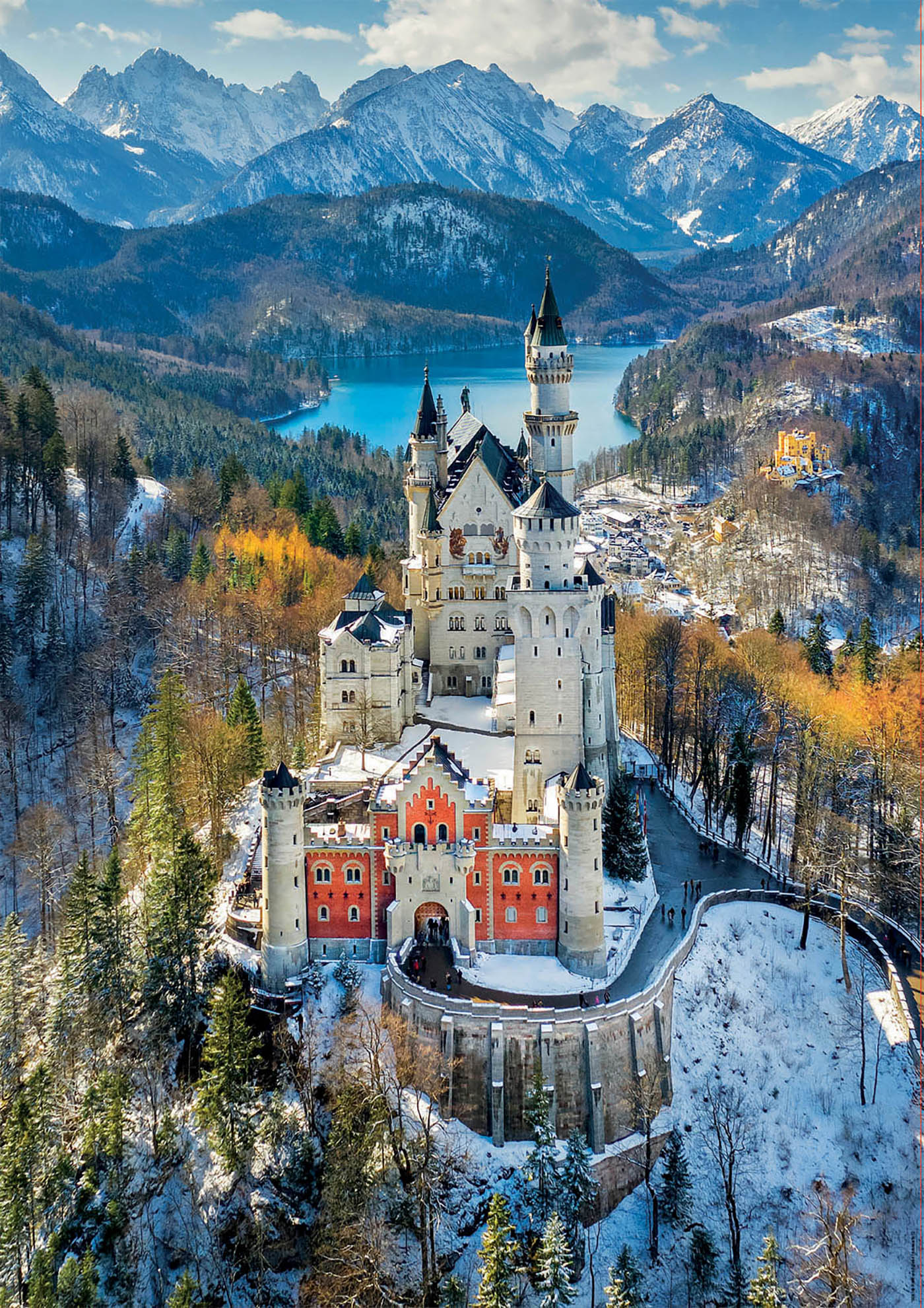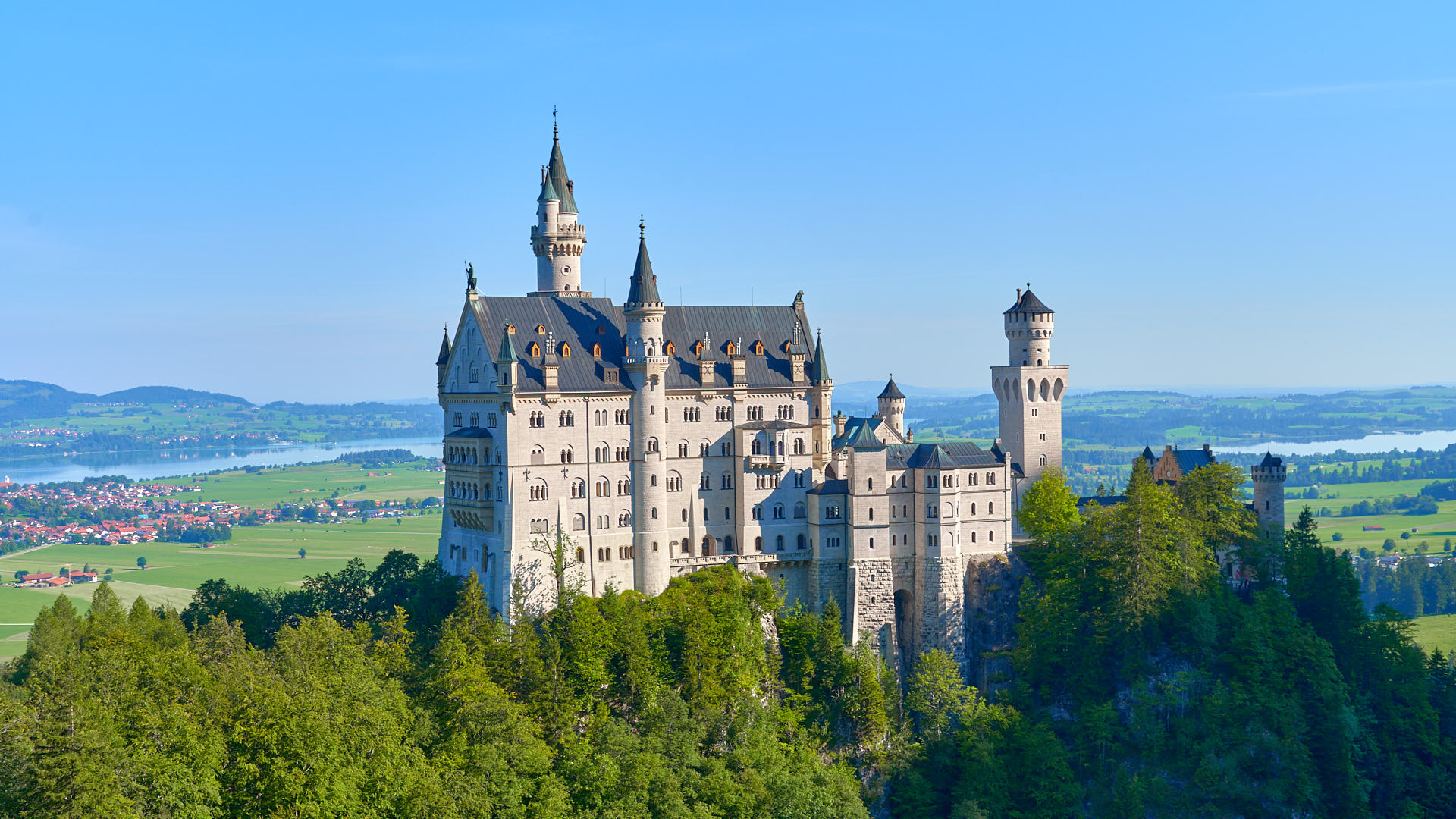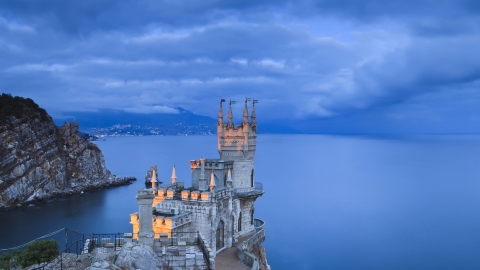Surely, in your childhood fairy tales, you have seen images of majestic and splendid castles more than once. In Southern Germany, one can witness with one's own eyes a real castle hidden in the middle of a vast and lyrical natural landscape. Not only does it have a magnificent appearance, it also preserves a historical story full of contradictions about a king with a sensitive and dreamy soul nearly 200 years ago.
The Dreamer or the Mad King of Bavaria
Growing up in a prestigious royal family, King Ludwig II spent his childhood at Hohenschwangau Castle in Bavaria, southern Germany. Hundreds of medieval-inspired frescoes, intricately woven tapestries, and Neo-Gothic architecture nurtured the young prince's passion for beauty and art.
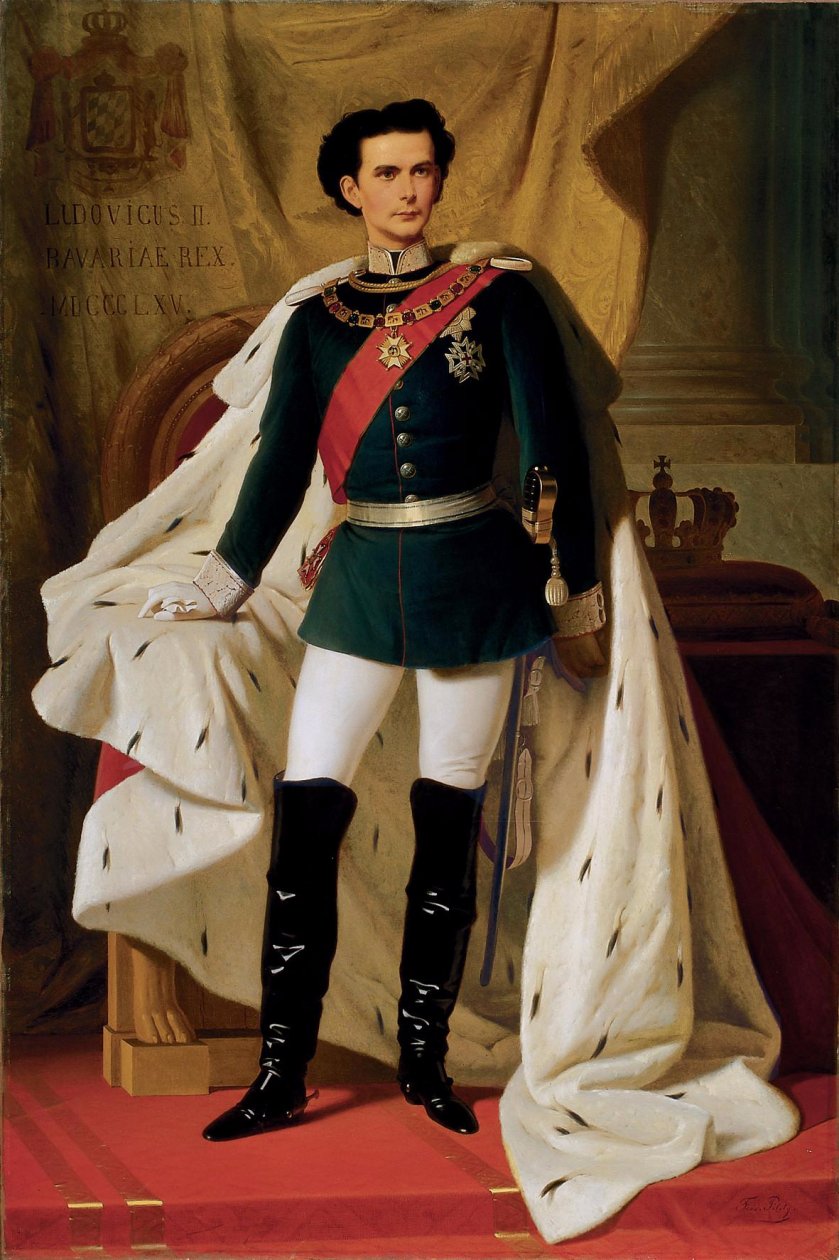
Painting of King Ludwig II
When he ascended the throne in 1864 at the age of 18, Ludwig II had everything one would expect from a young king in a fairy tale: good-looking, charming, romantic, and open to the people. However, his dreaminess took him too far from the responsibilities of a ruler of a kingdom. Ludwig showed no interest in managing the country's economy, foreign affairs, and was often absent from important meetings. Instead, he devoted all his energy to elaborate but extremely expensive artistic projects. One of them was Neuschwanstein Castle - Ludwig's biggest dream of his life.
Neuschwanstein is a colossal structure perched on a hill overlooking rolling mountains, lush green meadows, mystical forests, and picturesque lakes. It is no surprise that its construction cost a fortune. However, contrary to popular belief, King Ludwig did not use the state treasury to fund his extravagant passions. Instead, he used his entire personal fortune and borrowed heavily. Ignoring the advice of his royal advisors, he passionately pursued his life project at all costs. Because of this determination, Ludwig was considered a madman with an obsession with beauty, and therefore unfit to rule.
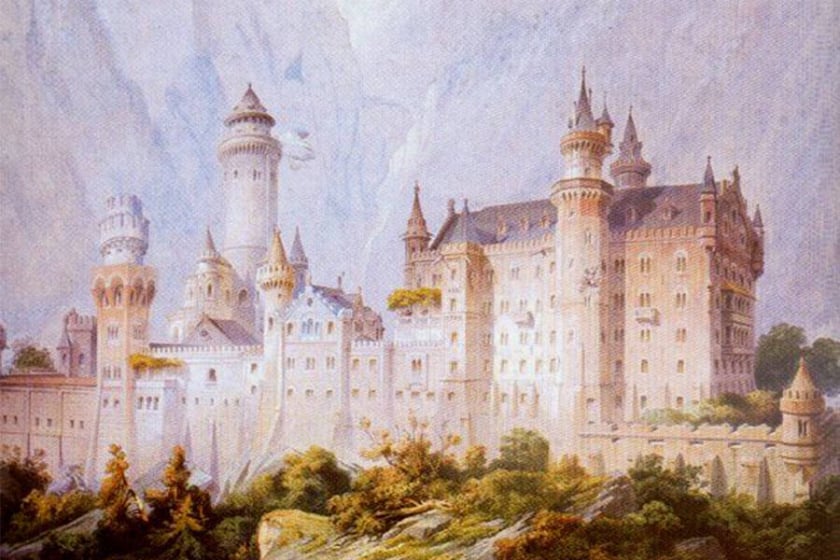
Drawing of Neuschwanstein Castle
It is even reported that in the last days of his life, he was arrested and forced to be treated in a mental hospital with his own doctor. His death in 1886 is also a controversial mystery. People found him right in the bottom of Stanberg Lake and came to the conclusion that he drowned by suicide.
Fairy tale castle and unfinished dream
King Ludwig II's childhood was greatly influenced by the harsh education and strict royal standards. He did not find comfort and sympathy from his family. Perhaps, that was also one of the reasons why the king was determined to build a world of his own - where his sensitive soul, love of freedom and beauty could be satisfied.
Neuschwanstein Castle is the crystallization of all these desires. Set on a picturesque hilltop in the Bavarian Mountains with its prominent conical towers and white limestone facade, the castle looms in the mist like a mystical kingdom in childhood stories. The height of up to hundreds of meters above the ground gives people a wonderful view with distant mountains on all sides, clear and calm lakes, green forests and vast open sky right before their eyes.
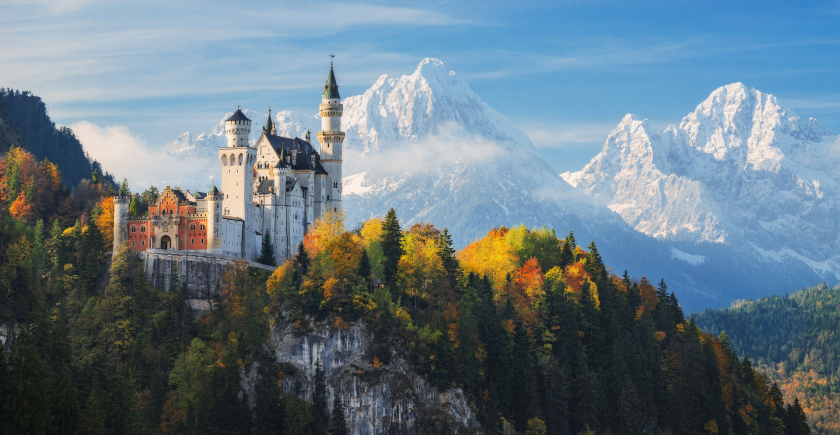
Neuschwanstein Castle in the middle of nature
That magnificence also revealed a splendid and magnificent kingdom with ornate rooms, gilded ceilings, exquisite mosaic collections, giant paintings, halls dedicated to music or large courtyards where the king could comfortably enjoy the fresh air of the surrounding mountains and forests.
With a vision that was both romantic and modern, King Ludwig II was determined to create a harmonious combination of medieval architectural style with modern technological conveniences. There were flush toilets, hot water systems for kitchens and bathrooms, central heating, elevators to transport food, telephones... These technologies were considered the most advanced at the time of the 19th century.

Interior of Neuschwanstein Castle

Interior of Neuschwanstein Castle
King Ludwig initially planned to spend three years on the entire ambitious project. However, the complex design and hilltop location made transportation and construction difficult. As a result, after five years of construction, only the gateway castle was completed. Technical details were added nearly five years later, but by the time King Ludwig II died in 1886, his fairytale castle was still unfinished.
Although the interior is unfinished, Neuschwanstein is one of Germany's most popular tourist attractions, welcoming more than 1.3 million visitors a year. It was also the inspiration for the castle in Disney's Sleeping Beauty.
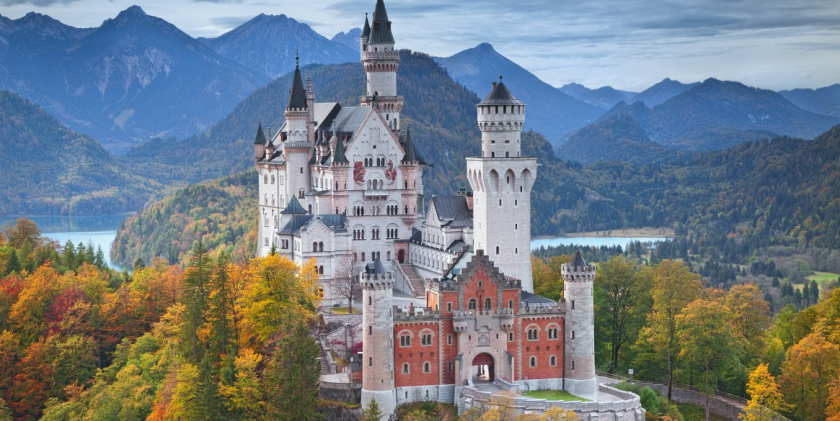
Neuschwanstein Castle was the inspiration for Disney's Sleeping Beauty.
Hundreds of years have passed in the blink of an eye of history, Neuschwanstein still stands tall in the midst of lush green nature as it originally belonged, silently watching the changes and ups and downs of the times. The story of King Ludwig II has never ceased to captivate the souls of those who love beauty, and with each step in the ancient castle, people somehow feel a haunting desire and the endless longing of a beautiful dream that has not yet been fulfilled.





